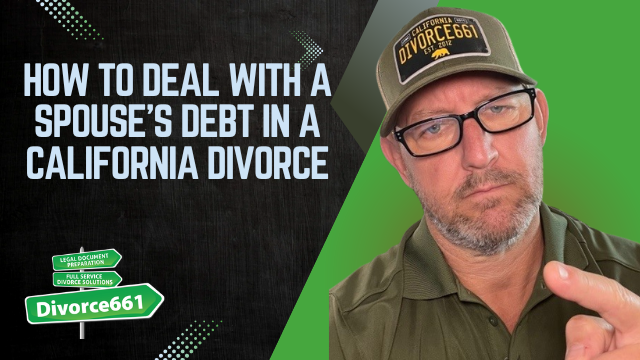How to Deal with Bankruptcy During a California Divorce
Overview
If you are going through a divorce in California and either you or your spouse is considering bankruptcy, you are facing a situation that can complicate both finances and the legal process. Bankruptcy does not automatically end a divorce, but it can pause parts of it. With the right coordination between family law and bankruptcy professionals, you can avoid costly mistakes and keep your case moving forward.
How Bankruptcy Impacts Divorce Cases
When a spouse files for bankruptcy, an automatic stay goes into effect. The automatic stay is a court order from the bankruptcy court that stops most collection and legal actions against the person who filed. That means some aspects of your divorce may be put on hold until the bankruptcy is resolved.
What the automatic stay typically affects
-
- Division of debts that are part of the bankruptcy filing
- Enforcement of judgments or collection efforts tied to the filing spouse
- Certain property transfers or partitions that would interfere with the bankruptcy estate
Common Areas Paused or Affected in a Divorce
Because the bankruptcy court is protecting the bankruptcy estate, family law matters that touch on debts or property the filer included in the bankruptcy may be delayed. This can include dividing credit card balances, mortgages, and in some cases property distribution. The exact scope of the pause depends on the bankruptcy chapter and what property or debts are part of the filing.
Real Client Example
We recently handled a case where one spouse filed Chapter 7 in the middle of a divorce. Instead of letting the two courts work at cross purposes, we coordinated directly with a bankruptcy attorney. That coordination made sure the divorce proceedings did not violate the automatic stay and that property and debt division remained compliant with both court systems.
“When one spouse files for bankruptcy, an automatic stay goes into effect. That can pause certain parts of your divorce—like dividing property and debts—until the bankruptcy is resolved.”
How to Handle Bankruptcy and Divorce Together
Here are practical steps to protect your interests and keep your divorce on track:
-
- Consult both a family law professional and a bankruptcy attorney as soon as possible. Both perspectives are needed to assess the interaction between the two cases.
- Inform your divorce attorney immediately if bankruptcy is filed. The automatic stay has rules that must be respected to avoid sanctions or delays.
- Coordinate filings and timelines so one court is not unknowingly interfering with the other.
- Consider timing—bankruptcy before divorce, during divorce, or after divorce all have different consequences. Get advice tailored to your situation.
- Know what debts may be discharged in bankruptcy and how that affects division of liabilities in your divorce settlement.
- Keep documentation organized so both attorneys can work efficiently and present clear information to the courts.
Why Professional Coordination Matters
Bankruptcy and family courts operate under different rules and with different objectives. Without coordination you risk violating the automatic stay, having settlement terms overturned, or creating confusion about which court controls certain issues. Working with both a family law professional and a bankruptcy attorney allows you to:
-
- Avoid stay violations
- Protect assets and financial rights
- Ensure any division of property and debts complies with both courts
- Reduce delays and unnecessary litigation
Timing Considerations: Before, During, or After Divorce
Bankruptcy at different stages of the divorce process brings different challenges and opportunities:
-
- Bankruptcy before divorce may simplify debt obligations but can complicate equitable distribution of assets.
- Bankruptcy during divorce often triggers the automatic stay and may pause property and debt division until bankruptcy matters are resolved.
- Bankruptcy after divorce can affect enforcement of financial orders if the debtor later discharges those debts in bankruptcy.
The correct approach depends on the details of your case. A coordinated plan will help you make smart choices about timing and strategy.
Practical Next Steps
-
- Stop and get professional advice before acting. Do not assume bankruptcy solves all marital debt problems.
- Tell your divorce attorney immediately if a bankruptcy petition is filed by you or your spouse.
- Ask your attorney to work with a bankruptcy counsel to map out compliance with the automatic stay.
- Document all assets, debts, and communication so both courts have accurate information.
- Consider settlement negotiations that take potential bankruptcy outcomes into account.
How We Help
We provide guidance for couples facing divorce and bankruptcy in California. Our services include flat-fee divorce solutions, help navigating divorce plus bankruptcy situations, and connections with trusted bankruptcy attorneys. We focus on stress-free, court-compliant paperwork and practical coordination so your case does not get derailed by unexpected legal conflicts.
Need Help Moving Forward?
If you are facing both divorce and bankruptcy and need help making sense of it all, schedule a free consultation at divorce661.com. We will walk you through your options, coordinate with bankruptcy professionals as needed, and help you move forward with confidence.



